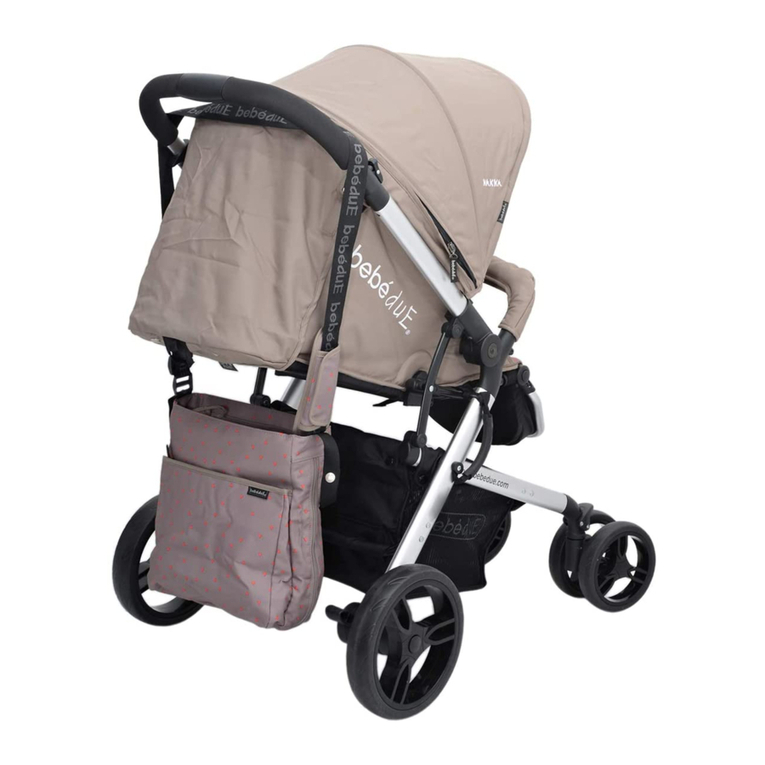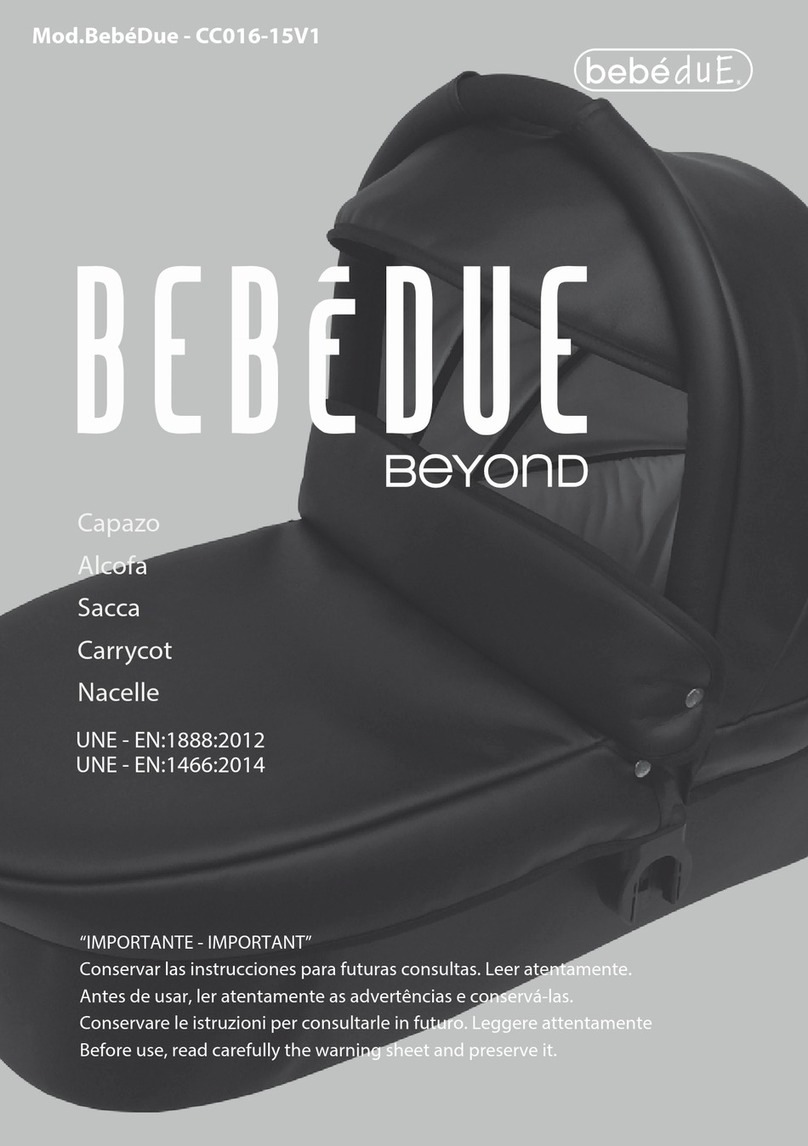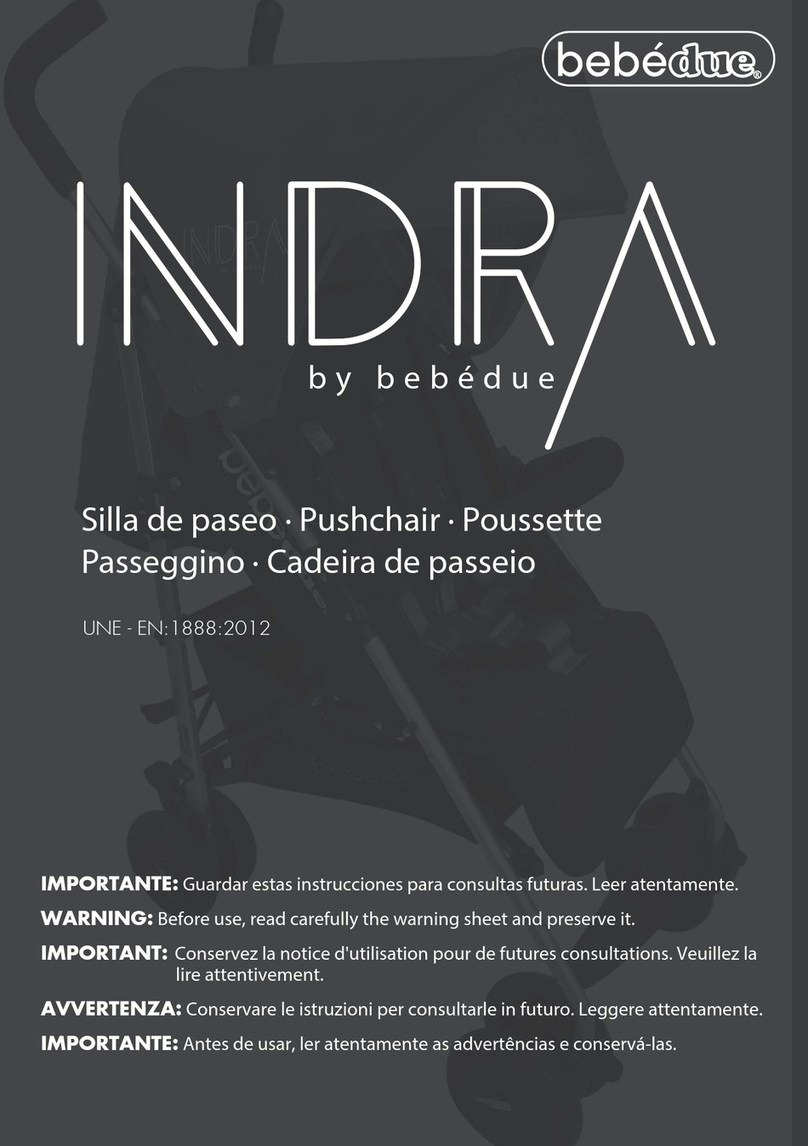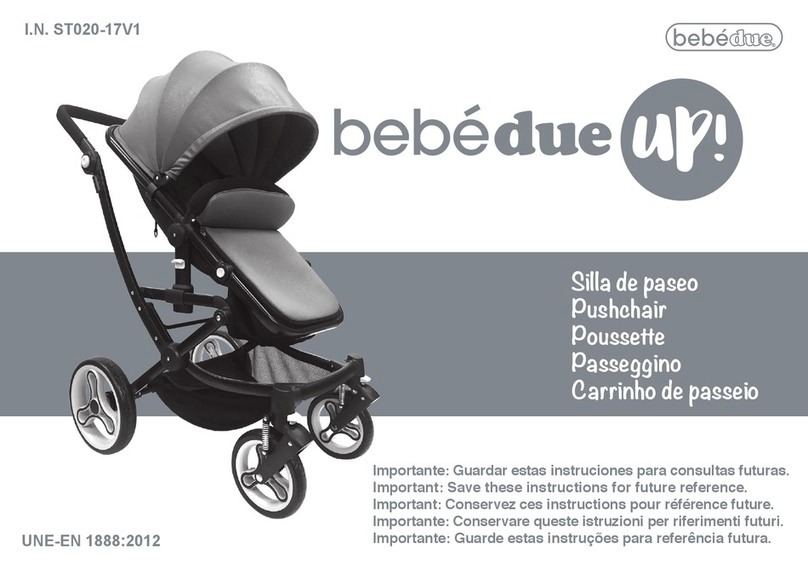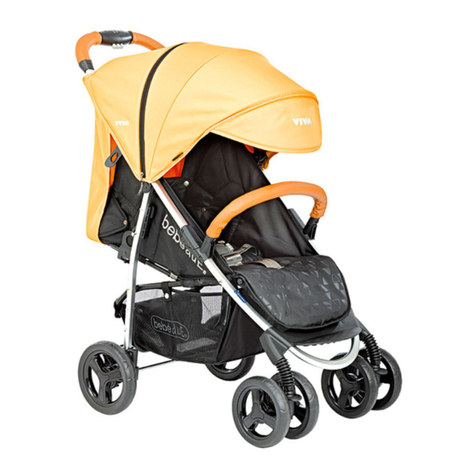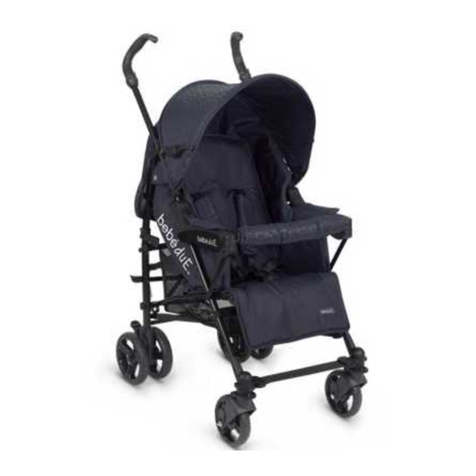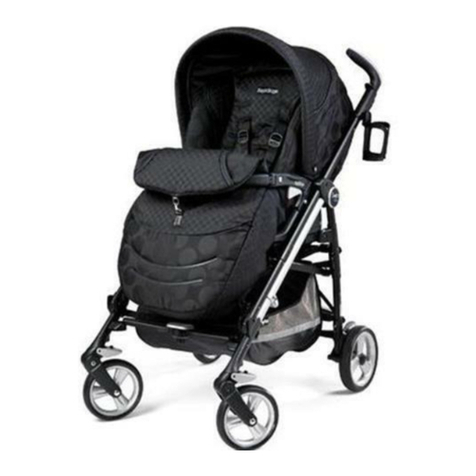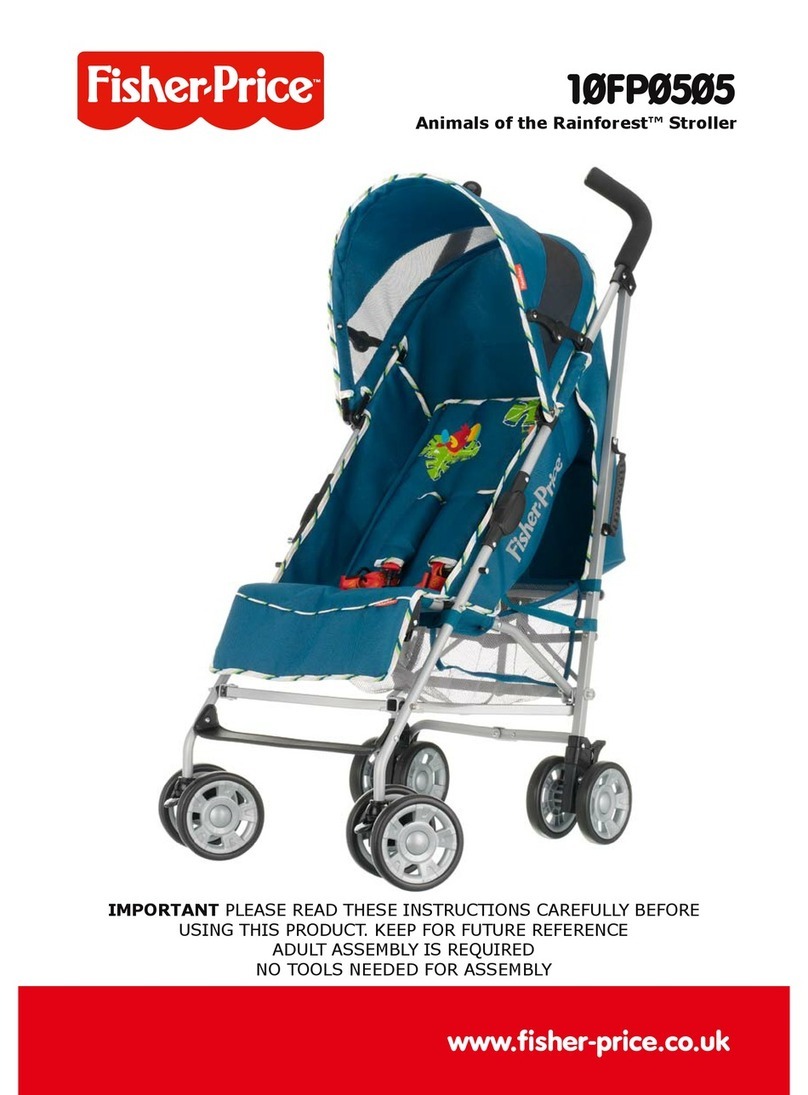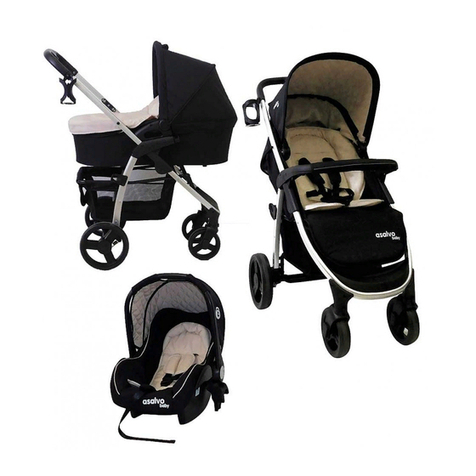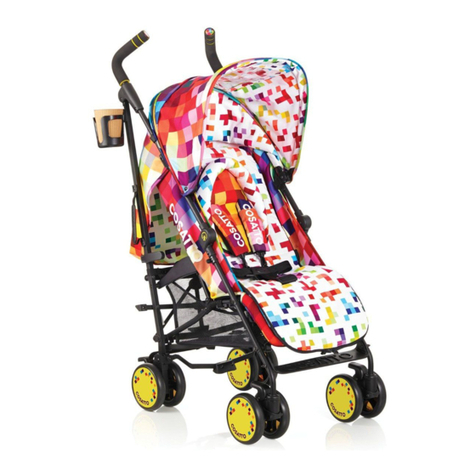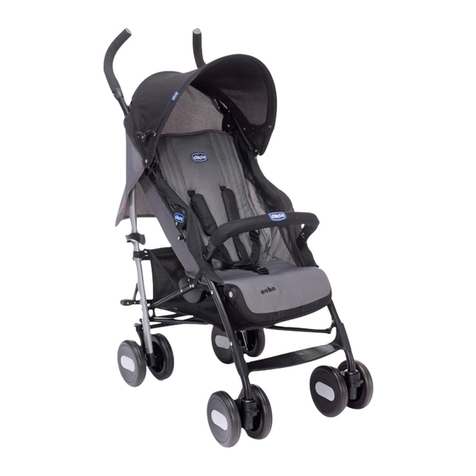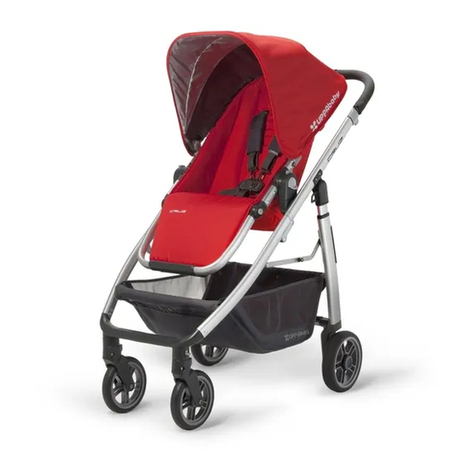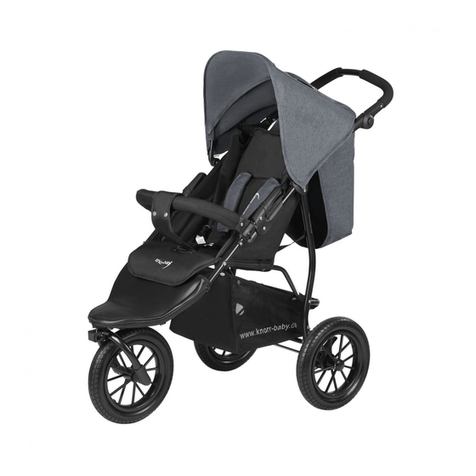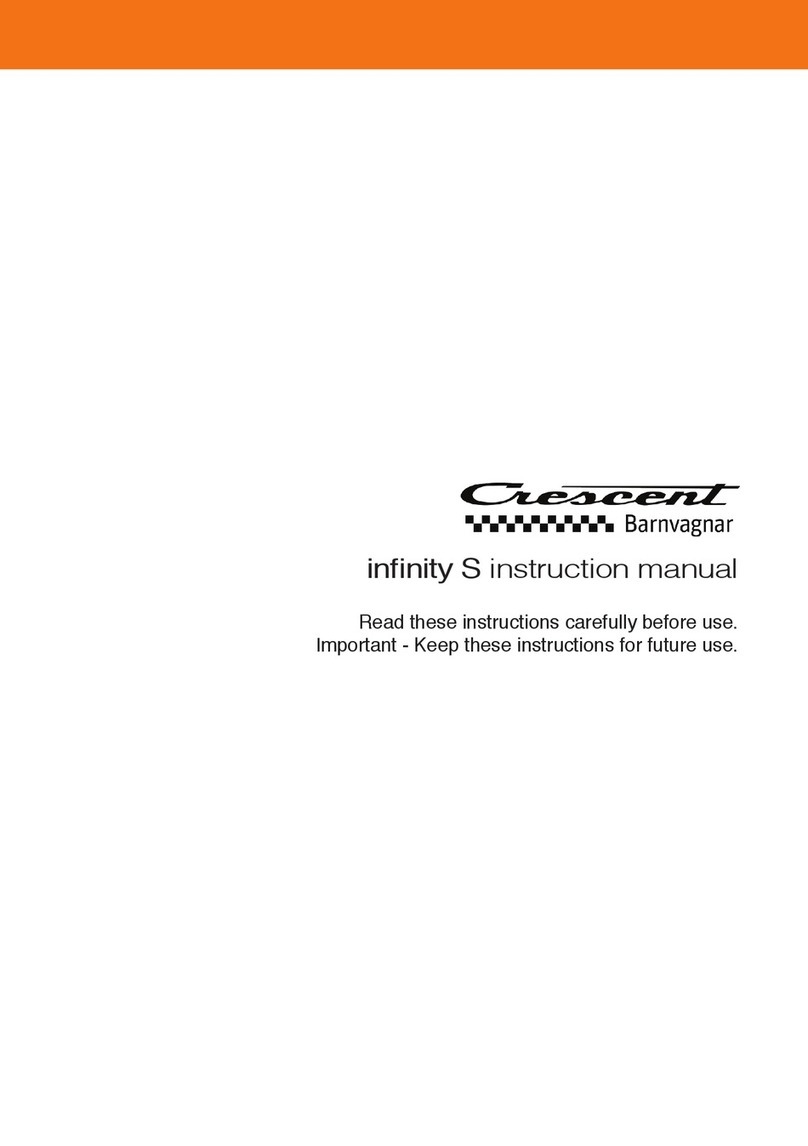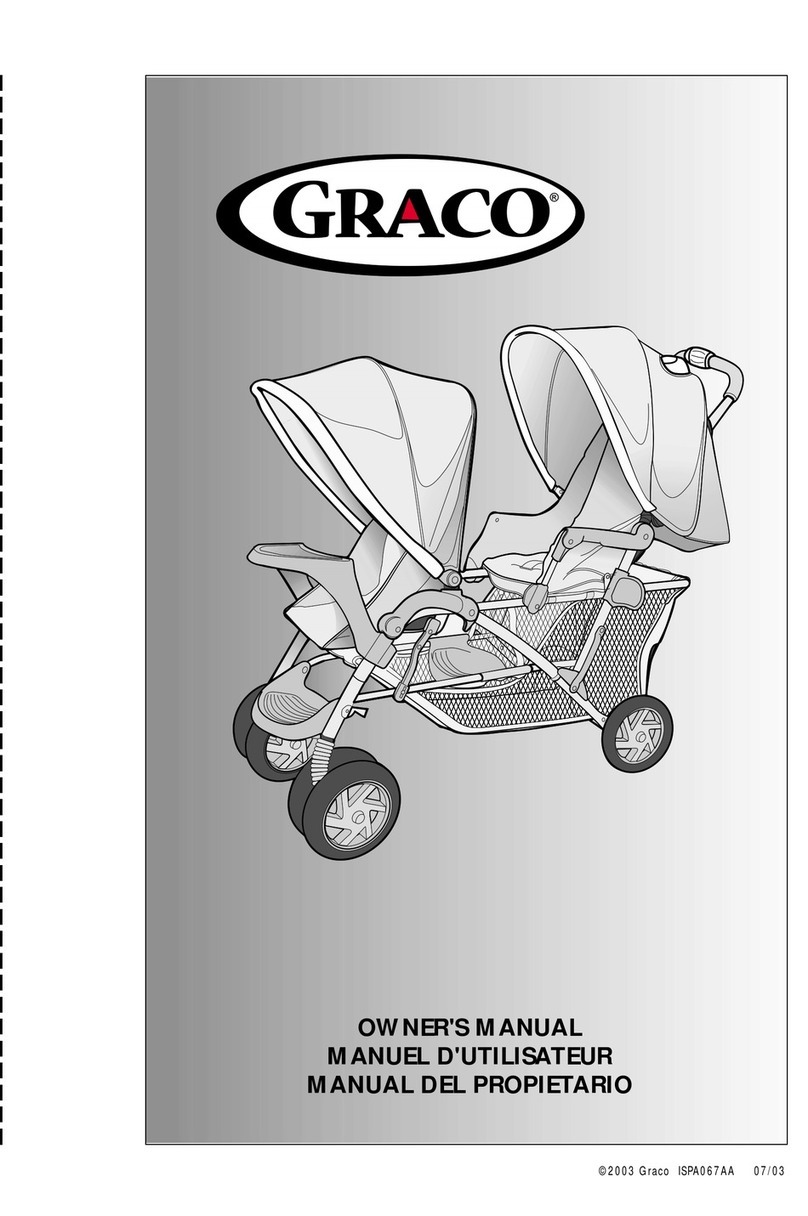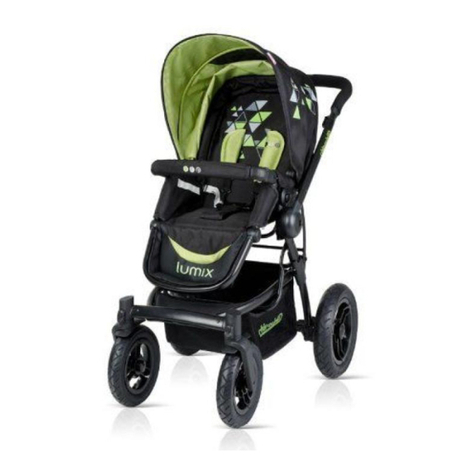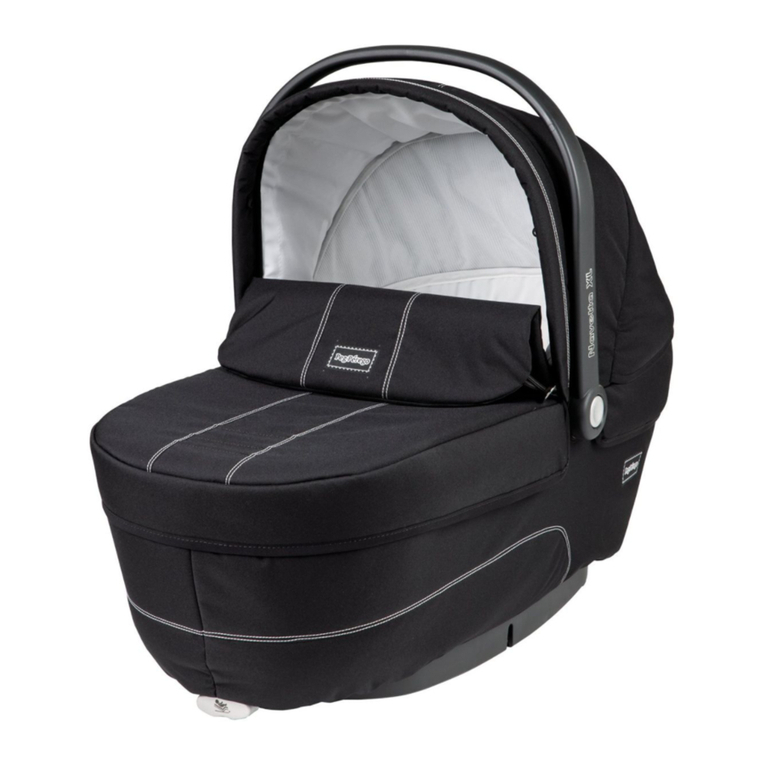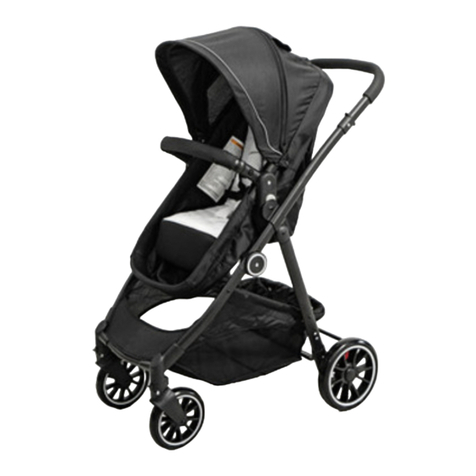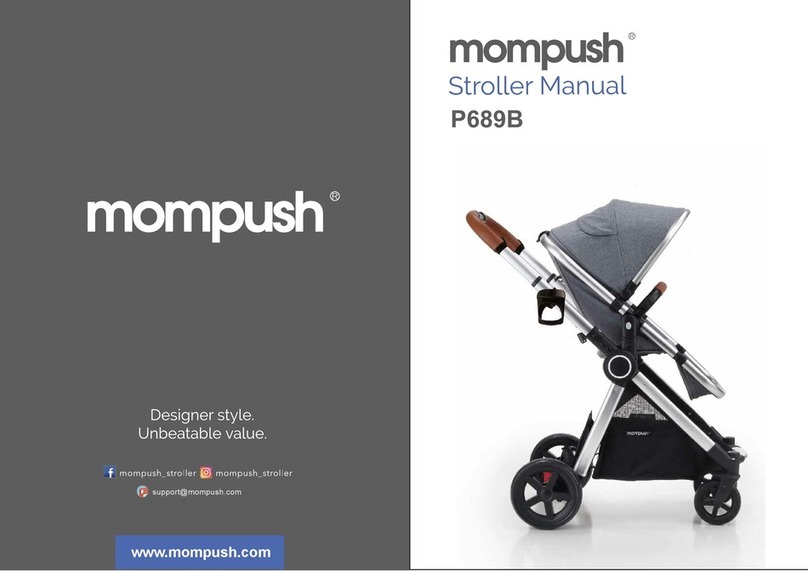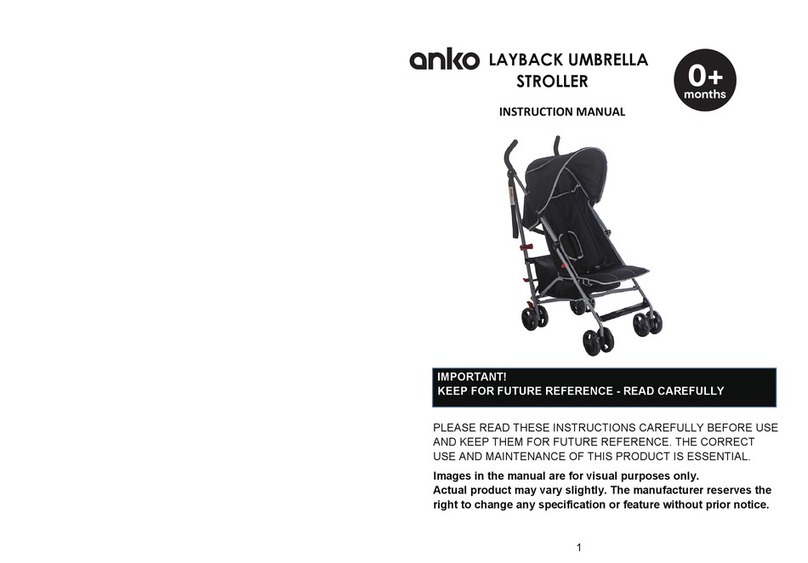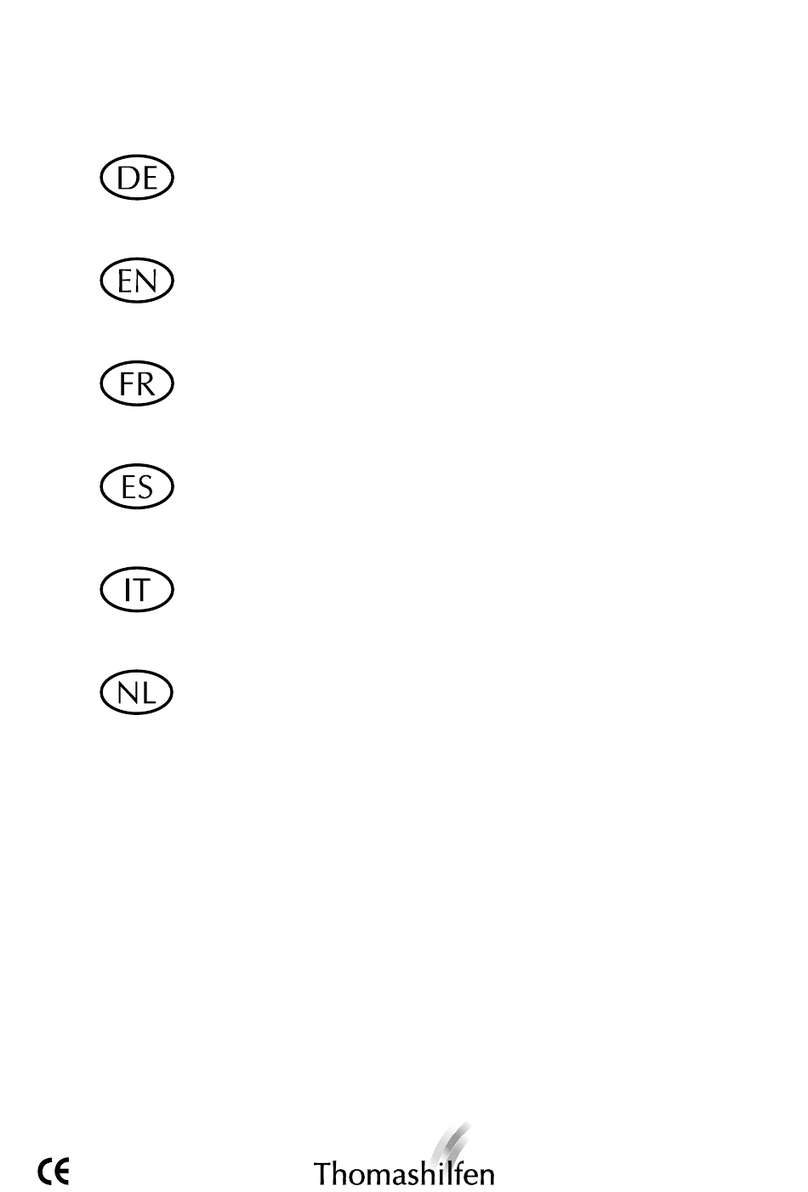bebeduE BEYOND User manual

Importante: Guardar estas instruciones para consultas futuras.
Important: Save these instructions for future reference.
Important: Conservez ces instructions pour référence future.
Importante: Conservare queste istruzioni per riferimenti futuri.
Importante: Guarde estas instruções para referência futura.
Silla de paseo
Stroller
Poussette
Passeggino
Carrinho de passeio
UNE-EN: 1888:2012
Mod.BebéDue - ST016-14V1

CONTENIDO
Al abrir la caja, compruebe que
contiene las siguientes piezas. Si
echa alguna en falta, póngase en
contacto con su vendedor local.
CONTENT
When you open the box, check it
contains the following parts.
If anything is missing, contact
your local supplier.
1. Stroller chassis (1)
Includes basket
2. Rear wheel axle (1 unit)
3. Front wheels (2)
4. Rear wheels (2)
ES
1. Chasis de la silla de paseo (1und)
Incluye cesta
2. Eje de las ruedas traseras (1und)
3. Ruedas delanteras (2uds)
4. Ruedas traseras (2 uds)
2
1
34
5
7
EN
IT CONTENUTO
All’apertura della confezione,
tutti gli elementi elencati.
Se uno di essi non dovesse
essere presente, rivolgersi al
rivenditore locale.
1. Telaio del passeggino (1pz)
Include cestello
2. Asse delle ruote posteriori (1 pz)
3. Ruote anteriori (2pz)
4. Ruote posteriori (2pz)
PT CONTEÚDO
Ao abrir a caixa, comprove que esta
contém as seguintes peças.
No caso de faltar alguma peça, contacte os
eu vendedor local.
1. Chassis do carrinho de passeio (1un.)
Inclui uma cesta
2. Eixo das rodas traseiras (1 unid.)
3. Rodas dianteiras (2un.)
4. Rodas traseira (2un.)
FR CONTENU
Poussette Lorsque vous ouvrirez
pièces suivantes.
S’il en manque, contactez votre
vendeur local.
1. Châssis de poussette (1u.)
Panier inclus
2. Essieu des roues arrière (1 pièce)
3. Roues avant (2u.)
4. Roues arrière (2u.)
CONTENIDO DE LA CAJA CHASIS
le carton, vériez qu’il contient les
vericare che vi siano contenuti
1

CONTENIDO
Al abrir la caja, compruebe que
contiene las siguientes piezas. Si
echa alguna en falta, póngase en
contacto con su vendedor local.
CONTENT
When you open the box, check it
contains the following parts.
If anything is missing, contact
your local supplier.
1. Seat (structure + cover) (1 unit)
2. Hood (1 unit)
3. Protector (1 unit)
4. Handle cover (for the chassis) (2 units)
ES
1. Silla (Estructura+vestidura) (1uds)
2. Capota (1 und)
3. Protector (1uds)
4. Funda mango (Para el chasis)(2 uds)
2
13
4
6
7
EN
IT CONTENUTO
All’apertura della confezione,
gli elementi elencati. Se uno di essi
non dovesse essere presente,
rivolgersi al rivenditore locale.
1. Passeggino (Struttura + imbottitura) (1 pz)
2. Capotta (1 pz)
3. Protettore (1 pz)
4. Fodera manico (Per il telaio) (2 pz)
PT CONTEÚDO
Ao abrir a caixa, comprove que esta
contém as seguintes peças.
No caso de faltar alguma peça,
contacte os eu vendedor local.
1. Carrinho (chassi + capa) (1 unid.)
2. Capota (1 unid.)
3. Protetor (1 unid.)
4. Cobertura da pega (para o chassi)
(2 unid.)
FR CONTENU
Poussette Lorsque vous ouvrirez
pièces suivantes.
S’il en manque, contactez votre
vendeur local.
1. Hamac (structure + housse) (1 pièce)
2. Capote (1 pièce)
3. Arceau de maintien de sécurité (1 pièce)
4. Housse guidon (pour le châssis) (2 pièces)
CONTENIDO DE LA CAJA SILLA
le carton, vériez qu’il contient les
vericare che vi siano contenuti tutti
2
5
5. Impermeable (1 ud)
5. Impermeable (1 ud) 5. Imperméable (1 ud)
5. Impermeável (1 ud) 5. Impermeabile (1 ud)

ES COMPONENTES
1. Visera capota
22. Protector mango manillar
2. Ventana capota
3. Capota extensible con malla
4. Palanca regulación respaldo
21. Botón regulación manillar
5. Bolsillo respaldo
20. Tirador de cierre
6. Botón extracción capota
19. Protector delantero
7. Botón extracción silla
18. Botón extracción protector
8. Palanca jación pivotante delantero
17. Botón regulación reposapies
9. Botón extracción bloque delantero
16. Reposapies
10. Bloque ruedas delanteras
11. Cesta
14. Pedal de freno
13. Botón extracción rueda trasera
EN PARTS
1. Hood sunshade
22. Protective handle grip
2. Hood window
3. Hood extendable with mesh
4. Backrest adjustment lever
21. Grip adjustment button
5. Backrest pocket
20. Fastener lever
6. Hood removal button
19. Bumper bar
7. Seat removal button
18. Protector removal button
8. Front swivel xing lever
17. Footrest adjustment button
9. Front lock removal button
16. Footrest
10. Front wheel lock
15. Closed chair xing lever
11. Basket
14. Brake lever
13. Rear wheel removal button
21
Silla de paseo (Chasis + silla) · Pushchair · Poussette
Passeggino · Carrinho de passeio
1
2
3
5
6
4
19
22
18
20
7
16
17
13 12 10
9
15
11
15. Palanca de jación silla cerrada
12. Rueda trasera 12. Rear wheel
3
14
8

PT COMPONENTI
1. Viseira da capota
22. Protetor da pega do guiador
2. Janela da capota
3. Capota extensível com malha
4. Botão de regulação do encosto
21. Botão de regulação do guiador
5. Bolso do encosto
20. Botão de fecho
6. Botão de extração da capota
19. Protetor dianteiro
7. Botão de extração da cadeira
18. Botão de extração do protetor
8. Alavanca de bloqueio do giro da roda dianteira
17. Botão de regulação do apoio de pés
9. Botão de extração do bloco dianteiro
16. Apoio de pés
10. Bloco das rodas dianteiras
15. Alavanca de bloqueio de carrinho fechado
11. Cesta
14. Alavanca de travão
13. Botão de extração da roda traseira
IT COMPONENTES
1. Visiera capotta
22. Protettore manico manubrio
2. Finestrella capotta
3. Capotta estensibile con inserto in rete
4. Pulsante regolazione schienale
21. Pulsante regolazione manubrio
5. Tasca schienale
20. Pulsante di chiusura
6. Pulsante rimozione capotta
19. Protettore frontale
7. Pulsante rimozione passeggino
18. Pulsante rimozione protettore
8. Leva ssaggio piroettante anteriore
17. Pulsante regolazione poggiapiedi
9. Pulsante rimozione blocco anteriore
16. Poggiapiedi
10. Blocco ruote anteriori
11. Cestello
14. Leva freno
13. Pulsante rimozione ruota posteriore
FR COMPOSANTS
1. Visière capote
22. Housse du guidon
2. Fenêtre capote
3. Capote extensible à let
4. Bouton réglage dossier
21. Bouton réglage guidon
5. Pochette dossier
20. Bouton de pliage
6. Bouton démontage capote
19. Arceau avant
7. Bouton démontage hamac
18. Bouton démontage arceau
8. Levier xation pivotante avant
17. Bouton réglage repose-pieds
9. Bouton démontage bloc avant
16. Repose-pieds
10. Bloc roues avant
15. Levier de xation poussette pliée
11. Panier
14. Levier de frein
13. Bouton démontage roue arrière
15. Leva di ssaggio passeggino chiuso
12. Ruota posteriore
12. Roue arrière
12. Roda traseira
4

3
34
8
5
“Click”
7
12
“Click”
“Click”
6
“Click”
“Click”
A
AB
5
A

11
“Click”
9
12
13
14 15
“Click”
10
AB
6

16
18
20
17
19
AB C
ABC
7
ABC

27
26
28
25
8
23
22
21
24
AB

ES
IMPORTANTE: LEER DETENIDAMENTE Y
GUARDAR ESTAS INSTRUCCIONES PARA
FUTURAS CONSULTAS.
SILLA BEBÉDUE
Este vehículo es para niños desde los 6 meses hasta los 15 kg máximo.
ADVERTENCIA: Este asiento no es adecuado para niños menores de 6 meses.
COMO ABRIR LA SILLA DE PASEO
Libere el gancho de plegado, que mantiene la silla de paseo cerrada (Fig.1). A continuación,
levante el manillar (Fig.2), la silla de paseo se habrá abierto completamente cuando oiga un
chasquido “click”.
MONTAJE DE LAS RUEDAS
Inserte el eje trasero en las patas traseras hasta oir el chasquido “click” (Fig.3).
Introduzca las ruedas traseras en el eje trasero, tal y como muestra la (Fig.4).
Instroduzca las ruedas delanteras en el pivote de sujeción delantero como indica la (Fig.5A).
Para usar el giro pivotante de la rueda delantera, active la palanca hacia abajo.
Para jar las ruedas en dirección ja, active la palanca hacia arriba (Fig.5B).
Compruebe que las ruedas delanteras y traseras están bien sujetas antes de usar la silla.
FRENO
Para accionar los frenos, presione con rmeza el pedal de freno (Fig.6). Pulse el pedal de
freno hacia arriba para desfrenar la silla de paseo. Asegúrese de que el freno está correctamente
accionado siempre que se detenga.
La silla le indicará si está frenada o no, color rojo frenado, color verde sin frenar (Fig.6A).
No detenga la silla de paseo en una pendiente para evitar accidentes.
IMPORTANTE: Una vez accionado el freno asegúrese que las estén las ruedas bloqueadas.
COMO QUITAR LAS RUEDAS
Para quitar las ruedas traseras, presione en el centro de la rueda (Fig.7A) y tire hacia fuera (Fig.7).
Para quitar las ruedas delanteras presione el botón y tire hacia abajo como indica la (Fig.8).
COMO REGULAR EL MANILLAR
Presione a la vez los dos botones del manillar y regúlelo a su interés (Fig.9).
9

ES
COMO INSTALAR LA SILLA
Asegúrese de que la varilla transversal esta en posición superior (Fig.10). Esta asegurará el
posicionamiento correcto del asiento y evitará oscilaciones de la silla.
Encajar el asiento al chasis e introducir los anclajes como indica la gura 11.
COMO EXTRAER LA SILLA
Presionar los botones laterales y tirar hacia arriba como indica la gura 12.
COMO VARIAR LA DIRECCIÓN DE LA SILLA
Extraer la silla como indica el paso anterior y darle la vuelta, introducir en el chasis hasta oír el
chasquido “click” (Fig.13).
CÓMO FIJAR Y QUITAR LA BARRA DE PROTECCIÓN FRONTAL
Sujete la barra de protección y presione los botones de control de ambos lados
simultáneamente (Fig.14A). A continuación, je la barra de protección a ambos lados de la silla.
Se habrá jado correctamente cuando oiga un chasquido “click”.
Para sacar la barra de protección delantera presione simultáneamente ambos botones y tire
hacia fuera (14B).
REPOSAPIÉS
Ajuste el reposapiés en la posición deseada presionando los dos botones laterales
simultáneamente. Tire simplemente del reposapiés hacia arriba: se levantará automáticamente
(Fig.15).
COMO AJUSTAR EL RESPALDO
La silla dispone de 3 posiciones de respaldo.
Para levantar el respaldo presione la palanca y tira hacia arriba (Fig.16).
Para bajar las posiciones del respaldo presione la palanca y tire hacia abajo (Fig.17)
COMO ABRIR LA CAPOTA
Simplemente tire de la parte delantera hacia delante (Fig.18A). La capota dispone de una visera
extraíble. Para poner la visera tire de ella hacia fuera (Fig.18B).
COMO EXTRAER LA CAPOTA
Presione los pulsadores y extráigala tirando de ella (Fig.18C).
La capota dispone de una ventana con jación por imán, para abrir la ventana tire de la solapa
hacia delante (Fig.19A).
También dispone de una sección con red, para abrir esta sección tire de la cremallera (Fig.19B) y
seguidamente tire de la capota hacia delante (Fig.19C).
10

ES
ARNÉS DE SEGURIDAD
Esta silla dispone de un arnés de seguridad de cinco puntos de anclaje.
PARA SOLTAR EL ARNÉS
Pulse el botón de la pieza central (Fig.20A). Automáticamente se separarán los anclajes.
PARA ABROCHAR EL ARNÉS
Compruebe que las piernas del bebé estén situadas a cada lado de la cinta entrepierna.
Introducir las lengüetas de las cintas pectorales dentro del alojamiento de las hebillas laterales
(Fig.20B). Asegúrese que las dos lengüetas quedan ajustadas dentro de las hebillas laterales en
la pieza central (Fig.20C).
Regule la correa alrededor de la cintura del bebé de manera que quede bien ajustada.
“ADVERTENCIA:No utilice nunca la silla sin el cinturón abdominal.”
Para mayor seguridad del bebé, debe llevar siempre el arnés de seguridad abrochado.
COMO INSTALAR EL IMPERMEABLE
Plantee el impermeable sobre la silla. Para evitar anular las posiciones de respaldo, asegúrese
de jar el velcro en los puntos que indica la (Fig.21).
Pase por detrás del tubo del chasis las dos partes del velcro como indica la (Fig.22), seguidamente
enganche los velcros como indica la (Fig.23), nalmente enganche los del tubo del reposapiés
(Fig.24).
La silla dispone de un amplio bolsillo en el respaldo (Fig.25 A).
El bolsillo dispone de una cremallera interior para acceder al arnès , en caso de que sea necesario
desmontarlo (Fig.25 B).
COMO PLEGAR LA SILLA DE PASEO
IMPORTANTE: Para plegar correctamente la silla, el asiento tiene que estar en posición sentado
y en el sentido de la marcha.
Accione simultáneamente los dos tiradores de pliegue de la silla de paseo (Fig.26) y empuje hacia
abajo.
A continuación, la silla de paseo se plegará automáticamente (Fig.27).
Asegúrese de plegar la silla de paseo hasta que el gancho de pliegue quede jado (Fig.28).
11

ES
CUIDADO Y MANTENIMIENTO
Este vehículo requiere un mantenimiento periódico por parte del usuario.
· Nunca fuerce los mecanismos ni las piezas móviles. Si no está seguro de cómo proceder,
consulte las instrucciones.
· Limpie las piezas de plástico y las piezas metálicas con un trapo húmedo o con un detergente
ligero. No use disolventes, amoníaco ni gasolina.
· No use limpiadores abrasivos, a base de amoníaco, a base de lejía o con alcohol.
· Guarde el vehículo en un lugar seco. Si está mojado, seque las partes metálicas para evitar
que se oxide.
· Una exposición a la luz del sol o a la lluvia excesiva o prolongada puede desgastar la tela y el
plástico o alterar su color.
· Lubrique periódicamente las piezas móviles con aceite uido, comprobando que penetra en
los mecanismos en profundidad.
· Si se ha utilizado la silla de paseo en la playa, límpiela de manera que no quede ni arena ni sal en
los mecanismos ni en las ruedas.
· No utilice lejía. Deje que la silla de paseo se seque por completo antes de usarla o guardarla.
· Respete las instrucciones de lavado de la tapicería que se muestran en las etiquetas.
del cochecito.
CONSEJOS DE LAVADO
Para limpiar el armazón utilice un paño húmedo. No utilice limpiadores abrasivos.
Las vestimentas de los asientos deben lavarse utilizando un paño húmedo con jabón.
Después del lavado o en caso de lluvia, séquela con un paño absorbente o espere a que se seque
completamente antes de plegarla.
Silla:
· Recomendamos lavar a mano en agua templada con detergente para prendas delicadas. *
· Secar tendido a la sombra.
· No usar secadora ni centrifugadora.
· No usar lejía en el tejido ni en la tapicería.
· No lavar en seco.
· Compruebe las etiquetas de lavado.
· Las partes de plástico y las partes pintadas debería limpiarlas con agua y un detergente suave,
nunca utilizar un detergente abrasivo.
* Se puede lavar la vestidura a màquina. No obstante tras 2 o 3 lavados es recomendable lavarla
a mano, ya que la espuma interior puede degradarse.
Para partes de Ecopiel:
· No limpiar en seco.
· No planchar.
· No lo retuerza para escurrir la prenda.
· No secar en secadora.
· Secar tendido a la sombra.
· No utilizar lejía o cualquier otro producto abrasivo.
12

ES
ADVERTENCIAS
ADVERTENCIAS EN CUMPLIMIENTO DE LA EN-1888:2012
IMPORTANTE: LEER DETENIDAMENTE Y GUARDAR ESTAS INSTRUCCIONES PARA FUTURAS CONSULTAS.
LA SEGURIDAD DEL NIÑO PUEDE VERSE AFECTADA SI NO SE SIGUEN ESTAS INSTRUCCIONES.
Este vehiculo es para niños desde los 6 meses y hasta los 15 kg máximo.
ADVERTENCIA: Este asiento no es adecuado para niños menores de 6 meses.
“ADVERTENCIA:No coloque a más de un niño ni otros bolsos, bienes o accesorios en la silla de paseo”.
“ADVERTENCIA:No deje al niño desatendido en la silla de paseo. Puede ser peligroso. Antes de llevar
a cabo cualquier ajuste en la silla de paseo, compruebe que el cuerpo del niño no esté cerca de ninguna
pieza móvil.”
“ADVERTENCIA:Para evitar cualquier herida grave provocada por una caída o un deslizamiento,
utilice siempre el arnés.”
“ADVERTENCIA:No permita que el niño se ponga de pie en la extensión del asiento.”
“ADVERTENCIA:Esta silla de paseo está diseñada para un niño exclusivamente.”
“ADVERTENCIA:Nunca cuelge bolsas o accesorios no diseñados para el objeto. Podrían desastabilizar
el cochecito.”
“ADVERTENCIA:No utilice la silla de paseo en escaleras convencionales ni mecánicas.”
“ADVERTENCIA:Pliéguela para transportarla.”
“ADVERTENCIA:Siempre que estacione la silla, ponga los frenos.”
“ADVERTENCIA:Asegúrese de que la silla está completamente erguida y compruebe que todos los
cierres están colocados antes de sentar al niño en la silla.”
“ADVERTENCIA:No coloque un peso excesivo en la silla ya que se puede desestabilizar. El peso
máximo de cualquier niño que use la silla no debe superar los 15 kg.”
“ADVERTENCIA:Cualquier artículo que se coloque en la cesta no debe exceder los 2 kg.”
“ADVERTENCIA:No use la silla de paseo cerca de un fuego directo ni la exponga a una llama,
barbacoa o calefactor.”
“ADVERTENCIA:No use la silla si faltara algún tornillo, tuerca, perno, etc. o tuviera algún componente
dañado.”
“ADVERTENCIA:Este producto no es adecuado para correr o patinar.”
“ADVERTENCIA:Asegúrese de que regularmente realiza inspecciones rutinarias completas y lleva a
cabo el mantenimiento y la limpieza de la silla de paseo.”
“ADVERTENCIA: No coloque la silla de paseo sobre parquet, suelo laminado, de linóleo
o con moqueta. Las ruedas podrían provocar manchas en el suelo que no se pueden
quitar.”
“ADVERTENCIA:Tenga en cuenta que el estampado, los dibujos de color y los accesorios
de la silla de paseo de este manual de instrucciones pueden variar del producto que
ha comprado.”
13
ADVERTENCIAS

ES
“ADVERTENCIA:No deben usarse accesorios que no estén aprobados por el fabricante.”
“ADVERTENCIA:Puede ser peligroso dejar al niño sin vigilancia.”
“ADVERTENCIA:Asegurarse de que todos los dispositivos de cierre están engranados antes
del uso.”
“ADVERTENCIA:Cualquier carga sujeta al manillar afecta a la estabilidad del cochecito.”
“ADVERTENCIA:No utilice nunca la tira entrepierna sin el cinturón abdominal.”
“ADVERTENCIA:No dejar nunca al niño desatendido.”
“ADVERTENCIA:Para evitar lesiones, segúrese de que el niño se mantiene alejado durante el
desplegado y el plegado de este producto”.
“ADVERTENCIA:Usar siempre el sistema de retención”.
“ADVERTENCIA:No permita que le niño juege con este producto”.
“ADVERTENCIA:Sólo se deben usar repuestos proporcionados o recomendados por el
fabricante / distribuidor.
“ADVERTENCIA:El vehículo debe ser usado únicamente por el número de niños para el que ha
sido diseñado.
“ADVERTENCIA:Cualquier carga jada al manillar y/o a la parte trasera del respaldo y/o en los
laterales del vehículo puede afectar a la estabilidad del vehículo.
“ADVERTENCIA:El dispositivo de estacionamiento se debe activar cuando se coloca y retira al
niño.
“ADVERTENCIA:Se recomienda usar la posición más reclinada para los bebés recién nacidos.
“ADVERTENCIA:Comprobar que los dispositivos de sujeción del capazo, del asiento o de la silla
de coche están correctamente activados antes de su uso.
14
ADVERTENCIAS
BebéDue no se hace responsable de posibles daños si no se siguen las anteriores
advertencias.
El chasis de esta silla es también compatible con el capazo
“BebéDue Beyond” y el G0+ “BebéDue Beyond”
Capazo
“BebéDue
Beyond”
Silla
“BebéDue
Beyond”
Chasis
“BebéDue
Beyond”
G0+
“BebéDue
Beyond”

EN
IMPORTANT: PLEASE READ CAREFULLY
AND SAVE THESE INSTRUCTIONS FOR
FUTURE REFERENCE.
BEBÉDUE STROLLER
This vehicle is for children from 6 months to 15 kg maximum.
WARNING: This seat is not suitable for children under 6 months.
HOW TO OPEN THE STROLLER
Release the folding hook that keeps the stroller closed (Fig. 1). Then raise the handle (Fig. 2);
the stroller is fully open when you hear a click.
ASSEMBLING THE WHEELS
Insert the rear axle into the rear feet until you hear a click (Fig.3).
Introduce the rear wheels into the rear axle, as shown in (Fig.4).
Introduce the front wheels into the front xing pivot, as indicated in (Fig.5A).
To use the front wheel swivel function, activate the lever by pushing downwards.
To x the wheels in a certain direction, activate the lever upwards (Fig. 5B).
Check that the front and rear wheels are properly xed before using the chair.
BRAKE
To activate the brakes, press the brake lever rmly (Fig. 6). Press the brake lever upwards to
release the stroller brake. Make sure the brake is properly activated whenever the stroller
is stopped.
To prevent accidents, do not stop the stroller on a slope.
The stroller will indicate whether the brake is on: red light indicates brake on, green light
indicates brake o.
In order to avoid accidents, do not stop the stroller on a slope.
IMPORTANT: Once the brake is activated, make sure the wheels are locked.
HOW TO REMOVE THE WHEELS
To remove the rear wheels, press in the centre of the wheel (Fig.7A) and pull outwards.
To remove the front wheels, press the button and pull downwards, as indicated in (Fig.8).
HOW TO ADJUST THE GRIPS
Press the two grip buttons at the same time and adjust it to suit you (Fig. 9).
15

EN
HOW TO INSTALL THE SEAT
Make sure the transversal bar is in the upper position (Fig. 10). This will ensure the seat is in
the correct position and will prevent it wobbling.
Fit the seat into the chassis and introduce the xings, as indicated in (Fig.11).
HOW TO REMOVE THE CHAIR
Press the side buttons and pull upwards, as indicated in (Fig.12).
HOW TO CHANGE THE DIRECTION OF THE SEAT
Remove the seat, as indicated in the previous step, and turn it round. Then introduce it into the
chassis until you hear a click (Fig. 13).
HOW TO FIX AND REMOVE THE BUMPER BAR
Hold the bumper bar and press the control buttons on either side at the same time
(Fig.14A). Then x the bumper bar on both sides of the chair. It is properly xed when you
hear a click.
To remove the bumper bar, press both buttons at the same time and pull it out (14B).
FOOTREST
Adjust the footrest to the desired position by pressing the two footrest buttons at the same
time. Simply pull the footrest upwards: it will lift up automatically (Fig. 15).
HOW TO ADJUST THE BACKREST
The chair has 3 backrest positions.
To raise the backrest, press the lever and pull upwards (Fig. 16).
To lower the backrest position, press the lever and pull downwards (Fig. 17).
HOW TO OPEN THE HOOD
Simply pull the front part forwards (Fig. 18A). The hood has a removable sunshade. To use the
sunshade, pull it outwards (Fig. 18B).
HOW TO REMOVE THE HOOD
Press the buttons and remove it by pulling (Fig. 18C).
The hood has a magnetically xed window. To open the window, pull the ap forwards (Fig.19A).
It also has a section with netting.
To open this section, pull the zip (Fig 19B) and then pull the hood forwards (Fig. 19C).
16

EN
SAFETY HARNESS
This stroller has a safety harness with ve xing points.
TO RELEASE THE HARNESS
Press the button on the central piece (Fig. 20A). The xings separate automatically.
TO FASTEN THE HARNESS
Check that the baby’s legs are either side of the centre strap. Introduce the chest strap tongues
into the side buckle housing (Fig. 20B).
Make sure the two tongues are properly adjusted in the central piece side buckles (Fig. 20C).
Adjust the belt around the baby’s waist so that ts properly.
WARNING: Never use the chair without restraints.
For better safety, the baby should always have the safety harness done up.
HOW TO INSTALL THE RAIN COVER
Place the rain cover over the stroller. In order to avoid changing the positions of the backrest,
make sure you attach the Velcro at the points indicated (Fig. 21).
Pass the two Velcro fasteners behind the chassis bar as shown in (Fig. 22)
and then attach the Velcro fasteners as shown in (Fig. 23) before attaching the fasteners on
the footrest bar (Fig. 24).
The stroller has a large pocket in the backrest (Fig.25 A).
The pocket has an inner zipper to access the harness, if necessary disassemble (Fig.25 B).
HOW TO FOLD THE STROLLER
IMPORTANT: In order to fold the chair correctly, the seat must be in an upright position
and facing forwards.
Press the stroller folding button while (Fig. 26) pushing downwards.
The stroller will then fold up automatically (Fig. 27).
Make sure you fold the stroller up until the folding hook is xed (Fig. 28).
17

EN
CARE AND MAINTENANCE
This vehicle requires regular maintenance by the user.
· Never force the mechanisms or the moveable parts. If you’re not sure what to do, consult the
instructions.
· Clean the plastic and metal parts with a damp cloth or a mild detergent. Do not use solvents,
ammonia or petrol.
· Do not use abrasive, ammonia-based, bleach-based or spirit-type cleaners.
· Store the vehicle in a dry place. If it is damp, dry the metal parts to prevent rusting.
· Exposure to sunlight or heavy or prolonged rain may damage the cloth and plastic or change
their colour.
· Regularly lubricate the moveable parts with liquid oil, checking it penetrates deeps into the
mechanisms.
· If the stroller has been used on the beach, clean it so that there is no sand or salt in the
mechanism or the wheels.
· Do not use bleach. Allow the stroller to dry completely before using it or storing it.
· Follow the instructions on the labels for washing the upholstery.
· If the stroller has not been used for a long time, maintenance must be carried out on it.
WASHING INSTRUCTIONS
Use a damp cloth to clean the frame. Do not use abrasive cleaners.
Seat covers should be washed by using a damp, soapy cloth.
After washing, or if there has been rain, dry with an absorbent cloth, or wait until it is thoroughly
dry before folding it.
Stroller:
· We recommend washing by hand in warm water with a detergent recommended for delicate
fabrics. *
· Hang out to dry in the shade.
· Do not tumble dry or spin.
· Do not use bleach on the cloth or the upholstery.
· Do not dry clean.
· Check the washing care labels.
· Plastic and painted parts must be cleaned with water and a mild detergent, never use an
abrasive detergent.
* Seat covers may be machine-washed. However, after two or three washes, it is advisable to
wash them by hand, since the foam inside may become degraded.
For eco leather parts:
· Do not dry clean.
· Do not iron.
· Do not wring garment.
· Do not tumble dry.
· Hang to dry in the shade.
· Do not use bleach or other abrasive products.
18

WARNINGS
EN
WARNINGS
WARNINGS IN COMPLIANCE WITH EN/1888:2012
IMPORTANT: PLEASE READ CAREFULLY AND SAVE THESE INSTRUCTIONS FOR FUTURE REFERENCE.
YOUR CHILD’S SAFETY MAY BE ENDANGERED IF THESE INSTRUCTIONS ARE NOT FOLLOWED.
This vehicle is for children from 6 months to 15 kg maximum.
WARNING: This seat is not suitable for children under 6 months.
WARNING:Never put more than one child, nor bags, items or accessories on the stroller.
WARNING:Never leave your child unattended in the stroller. This could be dangerous. Before making
any adjustment to the stroller, check that your child is not close to any moving parts.
WARNING:To prevent any serious injury which could be caused by a slip or fall, always use the harness.
WARNING:Never allow your child to stand on the extension to the seat.
WARNING:This stroller is designed for only one child.
WARNING:Do not hang bags from the handle, as this could destabilise the stroller.
WARNING:Do not use the stroller on staircases or escalators.
WARNING:Fold the chair before carrying it.
WARNING:Whenever you park the stroller, put the brakes on.
WARNING:Make sure that the stroller is completely upright and check that all the locks are in place
before putting your child into the stroller.
WARNING:Do not put too much weight in the chair, as this could destabilise it. The maximum
weight of any child using the seat must not exceed 15 kg.
WARNING:No article placed on the basket may exceed 2 kg.
WARNING:Do not use the stroller close to an open re, or expose it to a ame, a barbecue or heater.
WARNING:If the stroller is missing a screw, bolt, nut, etc. or any part of it has been damaged,
do not use it.
WARNING:This product is not suitable for use when running or skating.
WARNING:Make sure you regularly carry out complete routine inspections and maintain and clean
the stroller.
WARNING:Do not put the stroller on parquet, laminated ooring, linoleum or carpet. The wheels
may stain ooring indelibly.
WARNING:The pattern, colours and accessories of the stroller in this instruction manual
may not be the same as the product you bought.
WARNING:Do not use accessories that have not been approved by the manufacturer.
WARNING:It is dangerous to leave a child unattended
WARNING:Make sure that all the locking devices are engaged before use.
WARNING:Any load attached to the handle aects the stability of the stroller.
WARNING:Never use the crotch strap without the waist belt.
19
Table of contents
Languages:
Other bebeduE Stroller manuals
